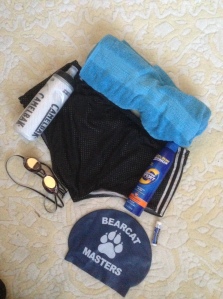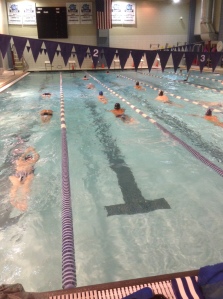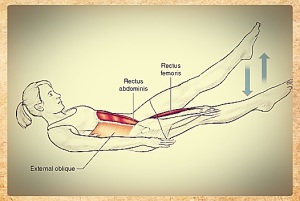http://loneswimmer.com/2013/05/17/how-much-do-i-need-to-swim-for-x-open-water-distance/
Via LoneSwimmer
With the Northern hemisphere open water season getting underway, and temperatures in many locations edging around the magic number, (10C/50F) , open water related questions inevitably arise as each year brings new swimmers and more triathletes.
A common question is some variation of:
I want to swim 1.5k/3k/3k/10k, can I do it or what should I do to prepare?
There are different answers for this depending on many factors:
- What is your swimming experience?
- What is your current swim training?
- What is your open water experience?
- Wetsuit or not?
- Sea, river or lake?
- How long do you have to prepare?
I have covered many aspects of these questions, such as getting started, essential rules of cold water swimming, basic skills, swimming in different conditions, etc. (The How To category has more of these).
- To swim any significant distance in open water the first requirement is regular swimming every week. This seems obvious but some people seem to think it isn’t. For almost any distance from 1k up, you should probably be swimming a minimum of three times a week. If your intended swim is over 5k, three times is probably not enough. Less swimming experience means that building up to regular swimming should be a longer transition as sudden increases will lead to a) injury and b) burnout.
- The second most important requirement, and one of the biggest mistakes beginners make, is to not get sufficient or even any open water experience before the actual event. Open water is De Facto not like a pool. Every day is different: Winds blow (or not), from different directions at different speeds in different weather conditions. Water conditions change dynamically, even during events. **You MUST get appropriate experience beforehand**. You must practice your skills, especially sighting and navigation, but also pack swimming, rough water, fear, contact with other swimmers.
* **A wetsuit is NOT A SAFETY AID**.
Many experienced open water swimmers feel very strongly that people substitute wetsuits for training and experience. A frightening video that was pointed out by Evan on freshwaterswimmer.com of 2012’s Escape From Alcatraz. Watch it. Experienced open water swimmers view this video with genuine amazement at the ineptitude on display both of swimmers and safety crew and logically therefore of the organisation. This is a lumpy day by OW standards but certainly manageable for experienced swimmers. Even has also previously discussed the matter of wetsuits and safety in open water swimming and made the excellent point that while a wetsuit may confer some protection for INDIVIDUALS, in a GROUP of swimmers the use of wetsuits lessens overall safety because organisers use them as a safety crutch, so to speak. See also Phil’s comment on this point in the comment section below. Swimming in rough water is something that requires practice.
YOU CANNOT SUBSTITUTE A WETSUIT FOR TRAINING AND EXPERIENCE.
Just because an event allows you to enter with your limited experience means nothing. Some just want your money. Events which have real qualifications requirement are not elitist. The organisers are experienced and aware of the dangers and attempting to reduce risk beforehand. As I’ve said before, safety decisions are best made outside the water. These are the *good events*. We all have to build up through various qualification levels to get into longer swims. This is the smart way to do it and organisers that understand this are to be trusted. Faking your qualification puts you and others in danger.
* You cannot safely swim 1k this week, 10k next week and do a 15k swim in the third week. Increases in training should be limited to an average of 5% per week. You shouldn’t go above this unless you have previous experience in ramping up swimming volume. That means if you swim 5,000 metres this week, in a month you will be swimming barely over 6,000 metres. You can prove me wrong, maybe, in the short-term, but in the long-term to do otherwise will lead to inevitable injury.
BUT HOW MUCH DO I NEED TO TRAIN?
There is no simple answer. However…
Endurance swimmers and athletes have a few rules of thumb:
- You can swim in a day what you swim in a week.
This is a reasonable guideline for medium to longer distances. I find it is most used from about 20k to 45k distances. If you are swimming these distances then you likely have your own opinion and may disagree with me. This is absolutely fine, since you know what you are doing and we all are different and I’m not trying to give an absolute rule. If you don’t have experience however, this is a reasonable rule.
This rule breaks down at the lower end. If want to swim 1k open water, you should be able to swim 1k in the pool without any difficulty and you should be swimming at least three times a week and more than 1,000 metres. If you struggle to swim 1k in the pool, you shouldn’t be swimming open water at all.
- You can swim 4 times longer than your longest training swim FOR ONE-OFF EVENTS.
This is a very old rule. The last part means that doing this in the absence of regular training means injury is more likely. You may get through it on grit but you won’t do it regularly.
So, I haven’t given you a clear answer. That because there is no single formula.
Open water requires training, experience and a realistic approach (because it’s dangerous and anyone who tells you otherwise is wrong).
Here’s a very loose training guideline that should help you swim your events comfortably, assuming you also have the open water experience. All of these assume one day of swimming open water per week from spring to your event. This is a much larger subject and this is very brief thumbnail sketch.
Target event: 1k. Swim 2k at least three times a week.
Target event: 1.5k/1 mile. Swim 3k at least three times a week, or 2k four times a week.
Target event: 3k. Swim 4k at least three times a week, or 4k three times a week
Target event: 5k. Swim 4k at least four times a week. Swim 5k once per week.
Target event: 10k. Swim 5k at least three times a week, but swim at least 4 times a week. Weekly target of 15k minimum.
Target event: 15k. Swim minimum of 20k per week.
Target event: 25k. Swim minimum 25k per week. There’s more variation here. Some experienced swimmers like to train less for marathon swims. I’m not one of them and my own experience and what I’ve seen of others means I believe strongly that in marathon swimming you have to be trained for when things go wrong.
Let’s #GetHiitOn!












